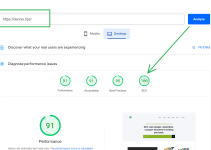1. Long-Tail Keywords Matter
When selecting keywords, prioritize long-tail phrases (3+ words) over generic terms. Long-tail keywords are more specific and target a niche audience, often resulting in higher conversion rates.
2. Understand User Intent
Consider the intent behind keywords. Are users looking for information, products, or solutions? Tailor your keywords to match the intent and provide relevant content.
3. Use Keyword Research Tools
Leverage tools like Google Keyword Planner, SEMrush, or Ahrefs to discover relevant keywords. Analyze search volumes, competition, and related terms to refine your keyword choices.
4. Competitor Analysis
Study your competitors' keywords. Tools like SEMrush or SpyFu can help identify keywords they rank for, giving insights into potential keywords to target in your niche.
5. Focus on Searcher's Queries
Think about questions users might ask related to your industry. AnswerThePublic and Google's “People also ask” section are excellent resources for discovering common queries.
6. Long-Term Strategy with Seed Keywords
Start with broad “seed” keywords and gradually narrow down your focus. Expand keyword variations from your seed terms to build a comprehensive keyword strategy.
7. Consider User Engagement Metrics
Look at metrics like click-through rates (CTR) and bounce rates for keywords. High CTRs and low bounce rates indicate relevancy, guiding your keyword selection.
8. Regularly Update and Adapt
Keyword trends change over time. Stay updated with current trends and update your keyword strategy periodically to align with evolving search behaviors.
9. Localize Keywords for SEO
If your business serves a specific locality, incorporate location-based keywords to enhance local SEO. Include city names, regions, or other localized terms.
10. Test and Refine
Experiment with different keyword variations. Monitor their performance and refine your strategy based on what works best for your website or content.





